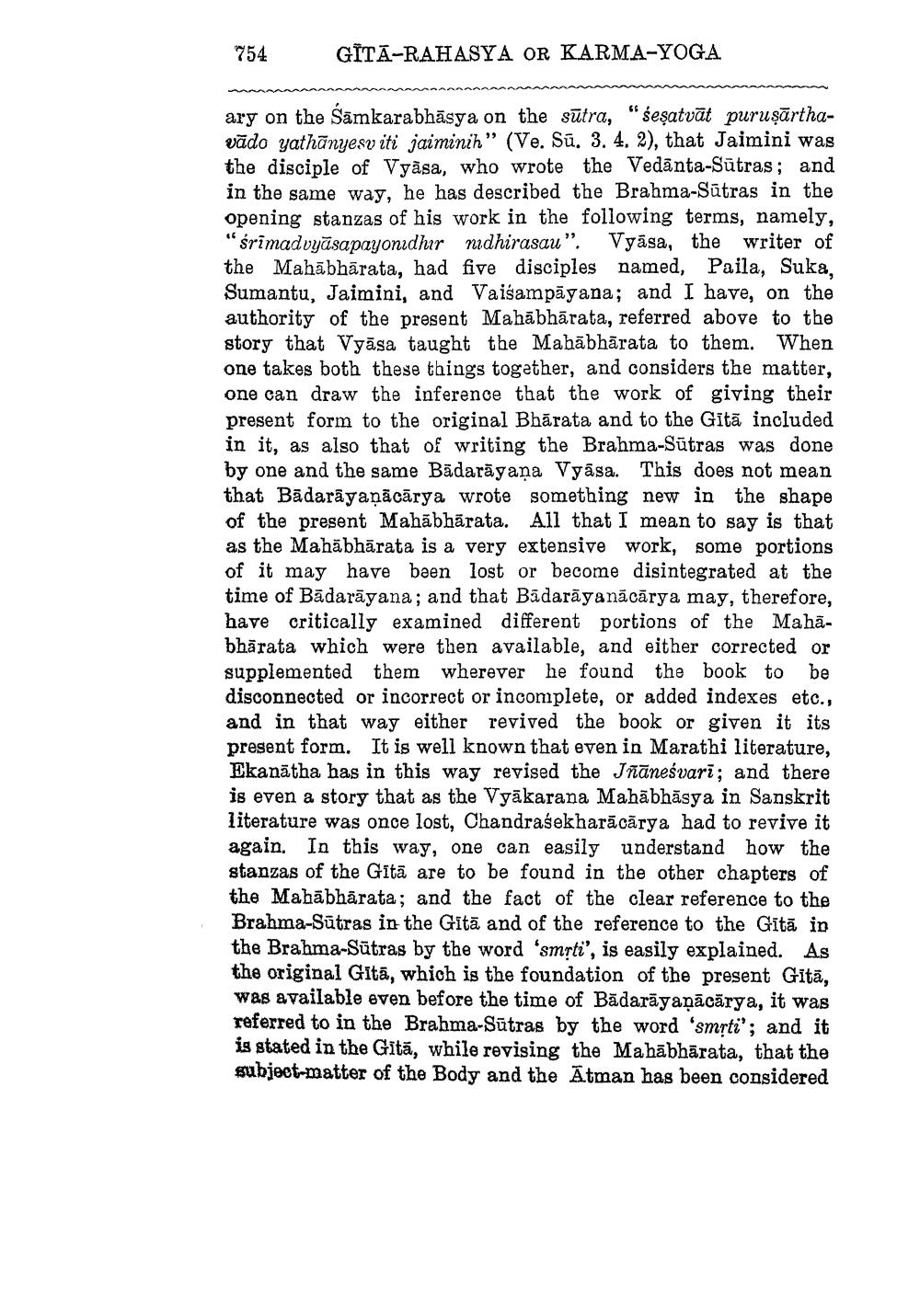________________
754
GÍTA-RAHASYA OR KARMA-YOGA.
ary on the Samkarabhāsya on the sūtra, "seşatvāt puruşārthavādo yathānyesv iti jaiminih" (Ve. Sū. 3. 4. 2), that Jaimini was the disciple of Vyasa, who wrote the Vedānta-Sutras; and in the same way, he has described the Brahma-Sūtras in the opening stanzas of his work in the following terms, namely, "śrīmadvyāsapayonidhir nidhirasau". Vyäsa, the writer of the Mahābhārata, had five disciples named, Paila, Suka, Sumantu, Jaimini, and Vaišampāyana; and I have, on the authority of the present Mahābhārata, referred above to the story that Vyāsa taught the Mahābhārata to them. When one takes both these things together, and considers the matter, one can draw the inference that the work of giving their present form to the original Bhārata and to the Gītā included in it, as also that of writing the Brahma-Sūtras was done by one and the same Bädarāyana Vyāsa. This does not mean that Badarāyanācārya wrote something new in the shape of the present Mahābhārata. All that I mean to say is that as the Mahābhārata is a very extensive work, some portions of it may have been lost or become disintegrated at the time of Bādarāyana; and that Bādarāyanācārya may, therefore, have critically examined different portions of the Mahābhārata which were then available, and either corrected or supplemented them wherever he found the book to be disconnected or incorrect or incomplete, or added indexes etc., and in that way either revived the book or given it its present form. It is well known that even in Marathi literature, Ekanātha has in this way revised the Jñāneśvarī; and there is even a story that as the Vyākarana Mahābhāsya in Sanskrit literature was once lost, Chandrasekharācārya had to revive it again. In this way, one can easily understand how the stanzas of the Gītā are to be found in the other chapters of the Mahābhārata; and the fact of the clear reference to the Brahma-Sūtras in the Gitā and of the reference to the Gītā in the Brahma-Sūtras by the word 'smrti', is easily explained. As the original Gitā, which is the foundation of the present Gitā, was available even before the time of Bădarāyaṇācārya, it was referred to in the Brahma-Sūtras by the word 'smrti'; and it is stated in the Gītā, while revising the Mahābhārata, that the subject matter of the Body and the Atman has been considered




